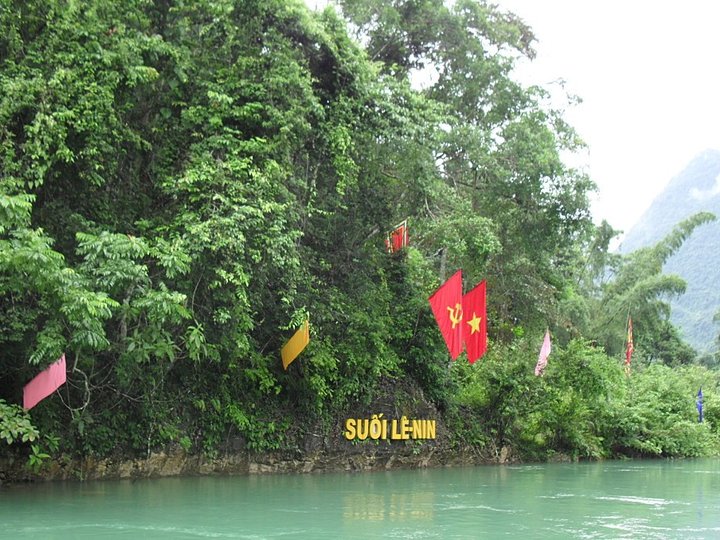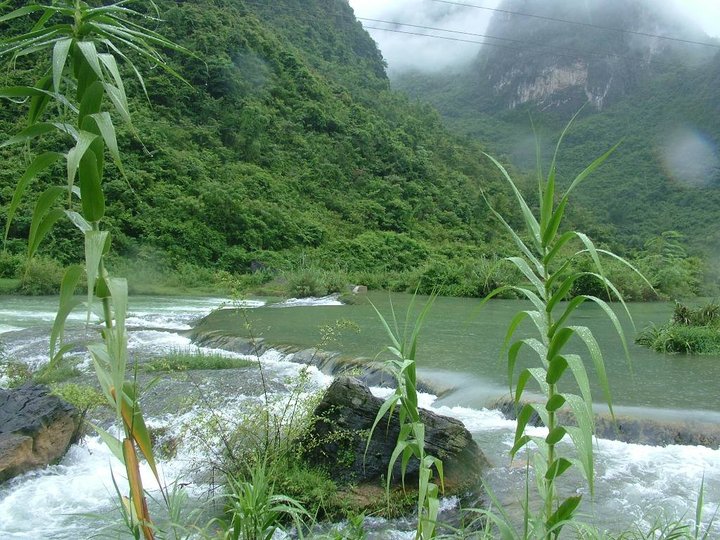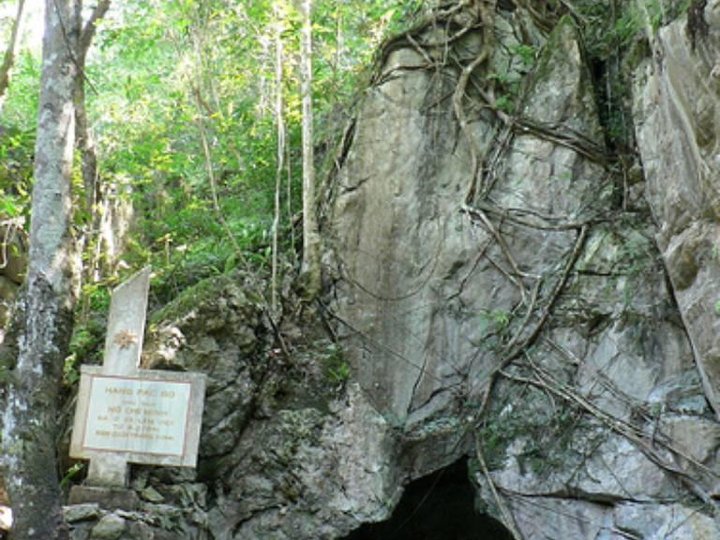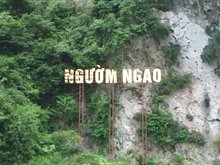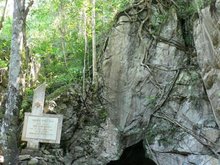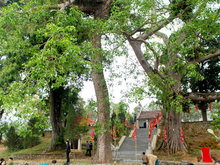Pac Bo
Pac Bo, located at the mouth of the confluence of two rivers namely Bang Giang and Hien rivers. Its historicity is due to the fact that Ho Chi Minh, on his return from China (where he had lived for 30 years) on 28 January 1941 established a revolutionary force at a cave near Pac Bo valley inhabited by the Nung tribes.
He organized the revolutionary movement by training the cadres, translated the History of Communist Party in the USSR into the Vietnamese language and also edited a revolutionary news paper called the 'Independent Vietnam' from Pac Bo. The Vietnam Independence League (Vietnam Doc Lap Dong Minh Hoi) known by its short form as Viet Minh was established here during the Eighth Congress of the Communist Party Central Committee held at Pac Bo from 10–19 March 1941. Between 1941 and 1945 until the Japanese left was a period of great turmoil in Vietnam. The Japanese set up King Bai as the head of state to counter the influence of the French government and the Viet Minh had established themselves their rule in six provinces in North Vietnam in the Red River delta. Following the surrender of Japan on 13 August 1945 in World War II, Ho Chi Minh had expanded the ambit of his "August revolution" to Hanoi, Hue and Saigon, and the king abdicated. Ho Chi Minh declared the independence of Vietnam and addressed the nation from Hanoi on 2 September 1945. The Pac ba Vestiges Area Exhibition Centre has an array of display of artifacts of the revolution with a Ho Chi Minh House of Remembrance. A stream and a hill near Pac Bo were named as "Lenin Stream" and "Karl Marx Mountains".

